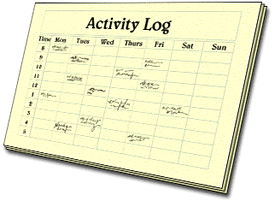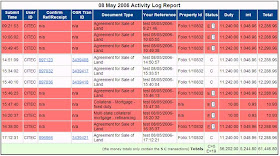We all know social media is an important tool for brand awareness and customer acquisition — but how exactly are you supposed to convert random Twitter and Facebook users into real-life customers? Well, that depends.
Different brands have different challenges when it comes to customer acquisition: “If you’re our customer, you’ve signed up for a year-long service, unlike the Starbucks of the world, where you can be a customer by coming in for a cup of coffee one day,” says Lisa D’Aromando, social media community manager at Equinox. Whether you’re a clothing shop, a restaurant or a subscription service, you must tailor your strategy so that it makes sense for your brand. That said, there are a few universal ways to help your company attract new faces on the social web.
“I’m a big believer in creating and sharing meaningful content,” says Danni Snyder, co-founder and creative director at jewelry brand Dannijo. “Over time, that is every brand’s best bet for creating and sustaining a following that will grow their business.”
But what does it all entail? Mashable spoke with some super-social brands about how they find new customers and lock in their existing ones they have as repeat buyers.
1. Get Your Search On

There are 340 million tweets sent per day — odds are that a few of them are referencing your brand, though you may not realize it. “Just because chatter on social media channels isn’t mentioning your brand by handle or hashtag doesn’t mean it isn’t happening,” says McKee Floyd, director of brand development at Sweetgreen.
The key is to be proactive. For the company’s upcoming Sweetlife Festival, Floyd set up Twitter searches for “sweetlife” and “sweetlife festival” on TweetDeck, which pulls the tweets even if users didn’t include the hashtag. “As groups of friends have conversations back and forth on Twitter about whether or not they should buy tickets, we monitor and chime in with helpful info, answering logistical questions about the festival and hopefully swaying them towards choosing to attend.”
Geoff Alexander, managing partner at Chicago’s Wow Bao, says his team also uses TweetDeck to search for certain keywords — such as “wow bao,” “baomouth” and “hot Asian buns” — and they reply to any and all posts they find. Wow Bao initially got into social media because there wasn’t a budget for advertising, so the brand opted to spread the word by giving away buns. “@BaoMouth searches the Internet for ways to reward people — giving away bao, full meals or mobile money [for the food truck],” says Alexander.
But the search tactic works for more than just food concepts. Danni Snyder says she monitor mentions of Dannijo religiously and also searches Twitter for “jewelry.” Consuming social media buzz about jewelry — and not just Dannijo’s wares — helps the brand be “aware of what people are talking about, what they like and don’t like, etc.” says Snyder, which can help Dannijo cultivate a new audience with their next collection.
One tip for finding new customers is to see who’s engaging with your competitors — if someone just started following or tweeted at or checked in at another bakery in the neighborhood, you could tweet at the person to come check out your cupcakes. They customer will appreciate the shout-out and the fact that you handpicked them to be your customer. Get clever with searches that are relevant to your business and offerings to help you target potential customers — then reel them in by being charming and human, not salesy.
2. Use Images to Engage
A picture is worth a thousand words — photos drive twice as much engagement as text posts do on Facebook. So if you’re looking to attract some new fans, start snapping pics.
Snyder says Instagram is her favorite medium for connecting with fans. “You can subliminally market without annoying your customers because each post is capable of accomplishing a number of things,” she says. “In one post, we can showcase a new design available at Dannijo.com, thus driving traffic to our ecommerce site; show how we’d style the jewelry; mention a tastemaker friend like Questlove or ManRepeller and promote them while they’re wearing Dannijo; inspire discussion and engagement, gaining valuable customer feedback; and provide followers some visual inspiration and insight into your creative process.”
But the pics need not be product-focused. Dannijo posts photos of food and musicians that embody the Dannijo vibe, and its 9,745 followers like and comment on every one of them. Similarly, Rent the Runway posts pictures of various style trends. “On Facebook, we try to use as much imagery as possible — not just promotional imagery of our dresses, but images that relate to pop-culture,” says Jenny Fleiss, president and co-founder of Rent the Runway. For example, in anticipation of the upcoming Great Gatsby movie, the RTR blog posted about Gatsby-inspired fashion trends.
3. Host a Competition
Nothing gets customers going like some swag, so contests are a great way to boost your followers and engagement. But be strategic about what you’re offering, or else you could attract the wrong followers.
ModCloth hosts monthly photo contests that garner hundreds of entries and thousands of votes. “Our most recent contest, Thrifted Treasures, asked our fans to share their favorite vintage finds, and our community could vote up their favorites,” explains Natasha Khan, ModCloth’s social media manager. “The social actions surrounding that event brought in thousands of new fans, which we otherwise would not have gained.”
Khan says contests and offers have been the most high impact customer generation events for ModCloth. But if you’re planning on hosting a contest, Khan has a few suggestions. First, build in actions that allow the fan to share to their social networks, as this will increase virality. Second, stay true to your brand. Third, tweak the contest to fit the platform on which you’re running it — “On Facebook that means sharing photography, on Twitter it means wordplay hashtags, and for Polyvore it means styling outfits,” says Khan.
“Quality is more important than quantity when it comes to Facebook fan growth. If your company product is clothing and your prize is free iPads, then you will gain followers that might not belong to your core demographic. Make sure the reward is something your customer will value, such as a gift card or grab bag of your products,” says Khan.
4. Spice Up The Platforms

With so many platforms to manage, be sure to have a distinct M.O. on each channel — and cross-pollinate sparingly. If a customer sees the same information and pictures on Facebook, Twitter, Tumblr, Instagram and Pinterest, she need only follow you on one of these platforms. Also, be wary of overpromotion. Nothing is more of a turnoff than a constant sales messaging — people easily can unfollow, and they will. Interestingly, many of Wow Bao’s posts have nothing to do with bao — @BaoMouth tweets during award shows and keeps a lively conversation going on a number of topics, winning people over with its spunky personality.
Of course, a big reason why you use various social media channels is to promote your product, so there are some things to keep in mind for the messaging when you are pushing your goods.
“Prove the value of being a Facebook fan. If you can find the same content and offers on other channels, there is no incentive to also follow the brand on Facebook,” Khan says. “Exclusive Facebook-only offers and original content reinforces our investment in the channel.” The same goes for every other social platform.
For Equinox, Facebook is for broadcasting of events and initiatives, like Cycle For Survival, Twitter is more conversation and geared toward responding to questions about membership, fitness routines and healthy eating, and Foursquare is the platform on which to find offers for Equinox’s spa and shop, which are open to the public. “Every Monday in March, we posted a different Foursquare check-in special for The Shop at all of our locations,” says D’Aromando. “Since you don’t have to necessarily be a member to go to The Shop or The Spa, these specials are accessible to everyone,” and can lure in potential customers into becoming Equinox members.
The company’s Q blog is another digital project where you’ll find awe-inspiring videos and original lifestyle content — a great way to add value for potential customers. “Q was launched to extend our brand and increase this word-of-mouth among our target audience. It gives people — members and nonmembers — topics and material from our Equinox experts to share with others,” says D’Aromando. “In lieu of promos, we create a different sort of currency: highly produced, branded content on Q with exclusives for our social media communities.”
5. Make It Personal
No one like a mass message — consumers like to feel as if they’re the only ones being spoken to. You should know your customers and speak to them in personal ways to establish touchpoints that build relationships and create loyalty.
“I like to make it very personable — if someone tweets a question I make sure to answer immediately,” says Steven Rojas, social media director at GrandLife Hotels. “Often I go as far as Googling that person to make sure I know as much as I can about them before reaching out. I want to humanize the brand so people don’t feel like they are speaking to a computer but to an actual person who cares about what they are saying. My obsession for all things digital never sleeps, so I make sure everyone gets what they need, when they need it.”
Live chats are another effective way to offer intimate interaction and engagement with fans. “It’s about having a conversation with your community, so we often do live chats with our stylists on Facebook to answer any styling questions customers may have,” says Fleiss. “These posts tend to elicit the most ‘Likes’ and comments.”
While you’re browsing sites for comments to respond to, don’t ignore negative feedback — addressing the complaint is an opportunity to convert an unhappy customer into an impressed brand ambassador.
“We’re very appreciative when someone takes the time to let us know about a bad experience or an issue because then we can help fix it,” says Jenny Danzi, a Mountain Dew brand manager. “Reply to every complaint to turn those consumers into advocates — even if you can not offer an instant fix, people appreciate getting a human response,” she adds. And don’t forget that even the littlest gesture can make a big difference. “Sometimes for us it can be as simple as letting consumers know where they can find our products,” says Danzi.
Wow Bao takes it to the next level, proactively finding ways to create touchpoints with consumers. “We comment on any and all posts mentioning people’s birthdays and pop culture,” says Alexander. “We even schedule posts for people’s birthdays, when people post something like, ‘My birthday is in 12 days’” — a very personalized tactic that can go a long way.
6. Let Your Customers Shine

Nothing makes a customer feel better than being acknowledged — or better yet, honored — by their favorite brand. Is there a way to offer kudos to your loyal fans? If so, make it happen.
Because women love to talk about what they’re wearing — and often wear RTR to social events such as weddings and cocktail parties — Rent the Runway strives to move these conversations online. “We have weekly style award contests on our blog and Facebook Page, and a section of our site called RTR Moments where women can share photos of themselves in RTR dresses,” says Fleiss.
For Mountain Dew, whose fan base is extremely young and active on social media, the “Diet Mountain Dew Supernova Spotter” is a great way to celebrate the return of the fan-chosen flavor in addition to highlighting the passion of the fans. “Dew drinkers can upload their photo of Diet Supernova, and on Friday we’ll open the entries up to public voting. Fifteen winners will each get a Diet Dew hoodie, and everyone who enters can easily share their Diet Supernova passion with friends,” Danzi says.
For Equinox, whose social media fan base is largely comprised of members, the goal isn’t as much to incentivize people to join (they already have), but to make them feel special for being members. “We have a Facebook app where members can refer friends directly, and if the friend joins, the member gets a referral bonus,” says D’Aromando. “We also just launched a program on Twitter where we’re rewarding our advocates by offering them private group fitness classes for them and their friends. This gives us a way to say ‘thanks’ to those who always post about us, and it gives them something to talk about with their friends — online and off.”
Brands, how does your company acquire new customers on social media? Consumers, what makes you want to become a customer? Let us know in the comments






















































































